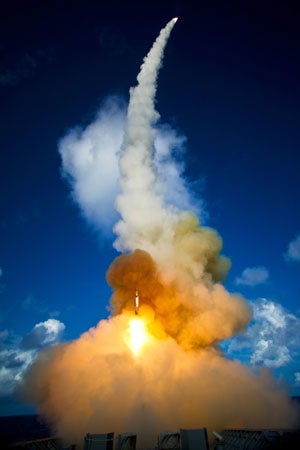As Turkish representatives announced last week their decision to participate in the European Phased Adaptive Approach (EPAA), the Obama Administration’s plan for missile defense, there seems to be a misconception about EPAA’s capabilities.
This week, The Washington Post wrote, “Development of a European missile shield accelerated under the George W. Bush administration. In September 2009, President Obama announced plans to construct a more extensive system in Europe that will be built in phases through 2020.” In fact, the EPAA is less extensive than where the Bush Administration was headed in terms of missile defense capabilities.
While the Obama Administration is planning on deploying 48 Aegis land-based interceptors, this step is incomparable to the Bush’s plan to deploy 10 two-stage Ground-Based Midcourse Defense (GMD) interceptors in Poland, because both types of interceptors are designed to counter different threats. In addition, the number of two-stage GMD interceptors could have been expanded if the size of the threat had grown.
The EPAA does not replace the tracking and cueing capability that would have been obtained by stationing of a powerful X-band radar in the Czech Republic (as the Bush plan foresaw). In addition, the Obama Administration’s plan downgrades the protection of the U.S. territory by developing capabilities to counter long-range ballistic missiles from sites in Europe in 2020 at the earliest. This is incomprehensible, as Iran is on a path to develop long-range capabilities by 2015, and North Korean missiles can already reach Hawaii and Alaska.
It is impossible to confirm that the Bush Administration’s commitment to the deployment of sea-based systems was identical to that of the current Administration. However, in total, it appears that the Bush’s Administration commitment to fielding ballistic missile defense systems in the European theatre were more robust than the EPAA, because its comprehensive missile defense capabilities exceeded those of the EPAA.
